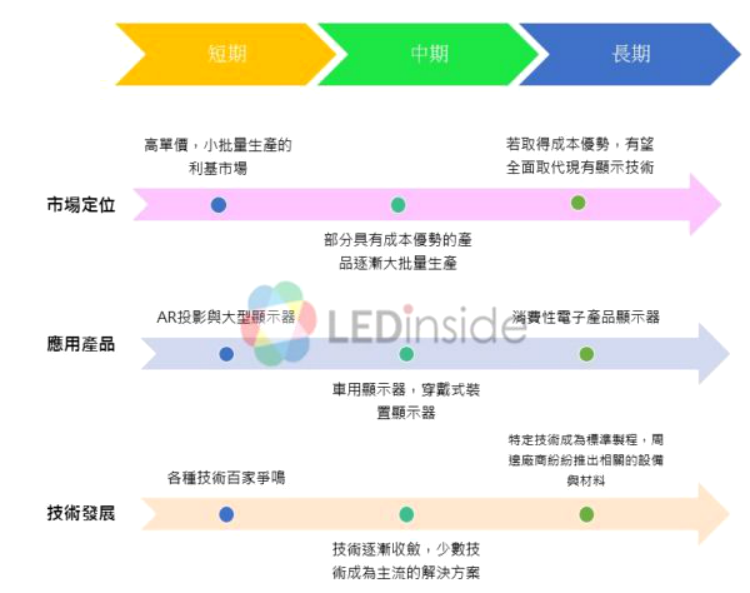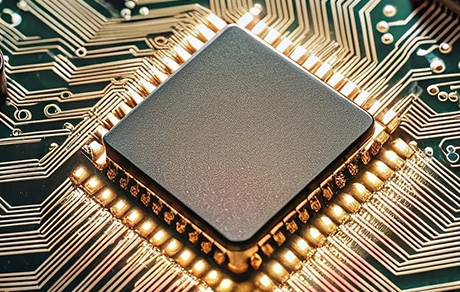According to the latest report from LEDinside, due to the emergence of Micro LED and Mini LED, LED has gradually transformed from backlight to self luminous in consumer electronics displays. In the future, every LED in the display will become a pixel, greatly increasing the usage of LED wafers.
With the breakthrough of technological bottlenecks and cost reduction, as long as a small number of display products begin to adopt this technology, the contribution to the overall LED output value will also be significant. Therefore, LEDinside estimates that after the commercialization of related products, the output value of Micro LED&Mini LED (excluding transfers) will reach 1.38 billion US dollars by 2022, and further grow to 2.891 billion US dollars by 2025.

(Source: LEDinside compilation)
Where is the short - to medium-term application market for Micro LED?
High brightness AR projection devices, ultra large display panels such as digital LED displays, and television applications are expected to introduce Micro LED technology in the next three years and gradually increase in volume.
From the perspective of the overall competitive landscape of the display industry, it has been observed that Japanese and Korean manufacturers are hoping to introduce Micro LED display technology to differentiate their markets, especially in areas such as ultra large TVs and commercial display screens. At present, for ultra large displays over 75 inches, if traditional LCD and OLED panels are used, the cost cannot be reduced due to inherent process limitations, and the final product price will be very high. But if Micro LED technology is used, it is possible to create a super large display through splicing, which has the opportunity to fill the gap in existing display technology.
In addition to ultra large displays, we have also observed the rapid development of Micro LED projection applications such as AR. Due to its high brightness, power saving, and the ability to make modules for optical and mechanical miniaturization, Micro LED technology will have the opportunity to become the new mainstream of display technology once it matures. LEDinside estimates that the overall shipment volume of AR products will reach 4 million units by 2025, and the proportion of products using Micro LED projection technology will reach 18%.
What are the benefits of AR products using Micro LED technology? Firstly, AR products have high requirements for size and weight, and must strive for comfortable use. Therefore, projection technology uses micro displays to integrate all pixels of the displayed image or video onto a single integrated circuit module. Projection technologies such as LCOS and DLP require additional light source mechanisms to generate images. As for Micro OLED, although it can directly emit light on integrated circuit pixels, reducing the size of the light source mechanism and overall weight, its brightness is low and it is easily affected by external ambient light, which reduces the display contrast effect. Therefore, although both are spontaneous light sources, Micro LED technology with better brightness and contrast than Micro OLED will eventually win.
Market Outlook for Long term Application of Micro LED
In the long run, if Micro LED wants to enter the mainstream display market, it must first reduce costs and increase production efficiency. Once there is a critical breakthrough in technology and cost, Micro LED will have the opportunity to fully replace existing display technologies.
Due to the fact that Micro LED reduces the size of LED chips to below 100 µ m, LED chip manufacturers need to invest in new equipment from LED epitaxial design to chip processing, such as higher uniformity MOCVD, higher resolution exposure machines, laser stripping substrates, etc., which will increase capital expenditures and depreciation costs. In addition, due to the lack of economies of scale in the initial stage, the unit price of a single Micro LED wafer will be 5-6 times higher than that of traditional LED wafers. With the gradual completion of equipment allocation and improvement of process yield, it is expected that the cost of Micro LED will decline year by year, and in five years, the unit area cost of Micro LED will have the opportunity to approach that of traditional LED.
As for the large-scale transfer, each major system manufacturer has a considerable amount of transfer technology under synchronous development. Due to the relatively large number of variables, it is still difficult to determine which technology will become the mainstream in the future.














 E-mail To Us
E-mail To Us We are Here
We are Here